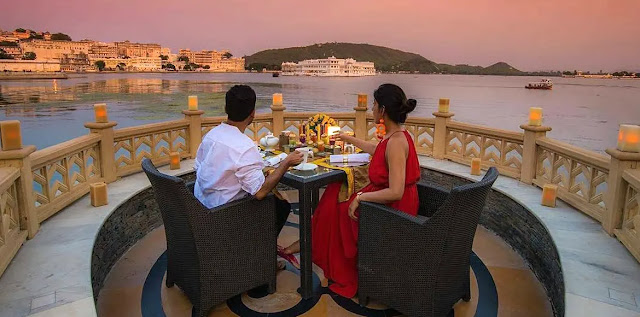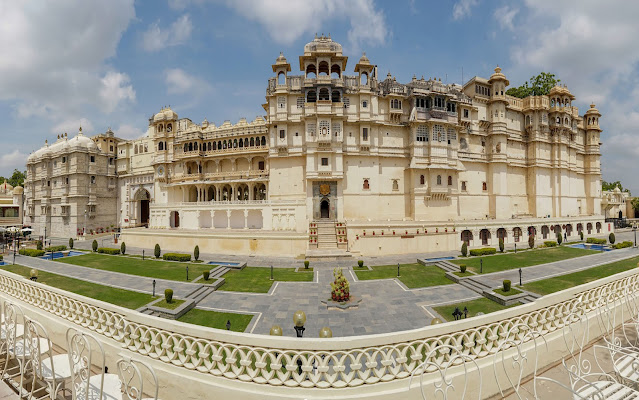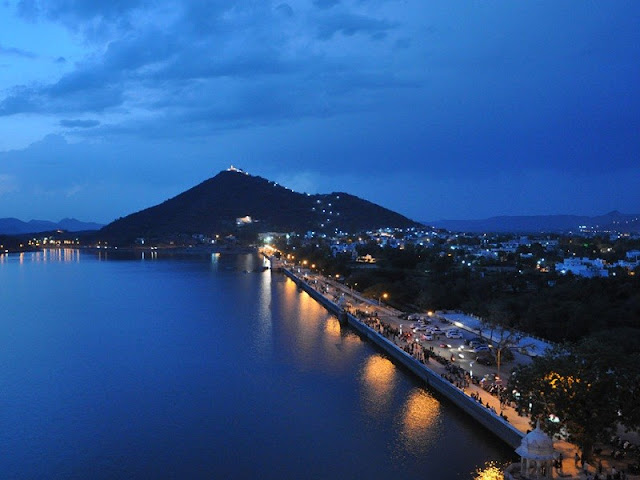Udaipur Romantic City
 |
| Why Everyone Loves Udaipur Romantic City |
Udaipur is a romantic city, and it is unrivaled in Rajasthan. Udaipur nestles alongside serene Lake Pichola, with the purple slopes of the Aravalli Range reaching away in all directions. Udaipur has fantastical palaces, temples, Havelis, and endless small, winding streets that provide a human counterpart to the city's natural beauties.
The peacefulness of lake boat excursions, the bustle, and color of bazaars, a vibrant arts scene, the charming old-world atmosphere of its heritage hotels, tempting stores, and some gorgeous countryside to explore on wheels, feet, or horseback are all available to visitors. Colonel James Tod, the East India Company's first political agent in the region, coined the phrase "the most romantic site on the continent of India" in 1829. Ever-higher hotels compete for the best view while traffic clogs old thoroughfares, diminishing the enchantment.
- Udaipur's History:
Udaipur is a royal city that has served as the Mewar monarchs' capital for centuries. Maharana Udai Singh was once on a hunting journey in the Aravalli Hills when he saw a holy sage. The wise man advised the King to build a realm in the rich valley well-protected by the Aravalli Hills. In 1557 A.D., Maharana Udai Singh laid the foundation stone for Udaipur.
We can locate Udaipur in a fortunate position on Rajasthan's maps. The city of Udaipur is famed for its beautiful surroundings and regal heritage. A variety of antique landmarks, including large castles, towering temples, and picturesque lakes, draw visitors to the ancient city of the Royalty.
- Udaipur: A cultural spot.
Udaipur is a lovely city, formerly the Rajputs' favorite vacation spot. A past period left this magnificent city with a thriving cultural scene.
Udaipur has the best city's culture, customs, and traditions. Every year, Udaipur attracts several tourists from all over the world. In Udaipur, many people still wear traditional Rajsthani habiliments and silver jewelry. Udaipur's festivals and fairs represent the city's cultural affluence.
We found a rich heritage of lakes, temples, towering forts, and palaces at Udaipur. The vivid and energetic dance gives a glimmer to the lovely city of Udaipur. Udaipur does not have a specific dance that is associated with it. The choreography of Udaipur has an impact on the Rajasthani dances. Rajasthan's peculiar dances include Bhavai, Ghoomar, Kachhi Ghodi, Kalbeliya, and Terahtaali. The Dandi Gair dance is still connected with Marwar and hence with Udaipur. When it comes to music, the residents of Udaipur find refuge in the sounds of Morchang, Naad, Tanpura, Sarangi, and other instruments that formerly echoed the Mewar monarchs' palaces.
- Five beautiful spots in Udaipur:
- City Palace
The City Palace, near Lake Pichola, is a massive palace complex with stunning halls and galleries. The entire complex has a history of 400 years. Maharana Udai Singh took the initiative to construct the City Palace in 1553. The City Palace has seen 22 generations of Sisodia Rajputs. Today, it accommodates luxury hotels and museums. The structures in the palace complex depict Mughal and Rajasthani architectural styles in marble and granite. From many of the rooms and balconies, one can see Lake Pichola. The terraces on the higher floors withal offer views of the rest of Udaipur.
 |
| City Palace Udaipur |
City Palace comprises many villas such as Amar Vilas, Krishna Vilas, Moti Mahal, and more; stunning hanging gardens, terraces, corridors, courtyards, splendid rooms, and pavilions. Many visitors can also explore the museum for its Rajput paintings. The majestic City Palace is Rajasthan's largest palace, with balconies, towers, and a circular dome rising over the lake. The Udaipur City Palace is a must-see tourist attraction for everyone visiting Udaipur for a day or more.
The Zenana Mahal, or Ladies Chamber, was the name of the prime museum within the City Palace. Our government converted into the City Palace Government Museum in 1974. Sculptures and antiquities are the mainstays of this museum.
The museum hosts the World Living Heritage Festival every year. This Museum is an excellent opportunity to meet art and craft specialists and participate in workshops. In the open spaces, there are often musical performances. The museum is open from 9:30 a.m. to 5:30 p.m. every day. Adults pay INR 250 as a regular entry fee.
- Lake Pichola:
Udaipur’s most well-known lake is also its oldest. Lake Pichola is a lake that was popular in 1362 A.D. Many charming restaurants and cafes surround the lake, allowing you to take in the scenery. There are four islands in Lake Pichola, called Jag Mandir, Mohan Mandir, Jag Niwas, and Arsi Vilas, each with a gorgeous castle on it. Jag Niwas Island is home to the opulent Taj Mahal Palace. These islands are only accessible by boat. Commercial boat trips start at ten o’clock in the morning and end at five o’clock in the evening. The lake is beautiful during and after sunset. As a result, evening boating costs twice as much as daytime boating.
 |
| Lake Pichola Udaipur |
- Bagore ki Haveli:
This mansion and museum are on the Gangori Ghat on Lake Pichola. Amar Chand Badwa, the Prime Minister of Mewar, built it in the 18th century. This domestic haveli, however, has been a museum since 1986. Bagore Ki Haveli has almost a hundred rooms and has elaborately furnished with mirrors and murals on the walls and doors. The royal halls, puppetry, weaponry, Indian marriages through puppets and dolls, and turbans from around India are all included in the museum, into five sections. Bagore Ki Haveli is open from 9:30 a.m. to 5:30 p.m. and has a unique Dharohar Dance Show from 7 p.m. to 8 p.m.
 |
| Bagore ki Haveli Udaipur |
- Lake Fatehsagar:
Lake Fatehsagar is the second largest artificial lake in Udaipur, surrounded on three sides by the Aravalli Range of mountains. The lake’s circle has the surroundings of a promenade, which provides the ideal setting for a morning or evening stroll. They fed lake Fatehsagar by a dam called “Connaught Bund,” built by Maharana Fateh Singh in the late 1800s. Boating, motorboating, and speed-boating are just a few water sports activities available here. There are three islands on the lake itself, two of which are parks and a solar observatory.
 |
| Lake Fatehsagar Udaipur |
- Sanjjangarh Palace:
Sanjjangarh Palace is a fort on the Bansdara Peak of the Aravalli Hills. Maharana Sajjan Singh used it as his monsoon abode. Apart from sheltering the monarch of Mewar, the built-in 1884 with the primary aim of allowing him to see the rain clouds. The views from up here are incredibly stunning, with most of Udaipur’s lakes and the Aravallis’ hilltops visible from the terrace courtyard. They made the fort of white marble, and It has nine floors. There is also a system for collecting rainwater and storing it in an underground cistern.
 |
| Sanjjangarh Palace Udaipur |
The palace is open to the public every day from 8 a.m. to 6 p.m., and admission is merely INR 10. That will be the case if you bring your camera with you.